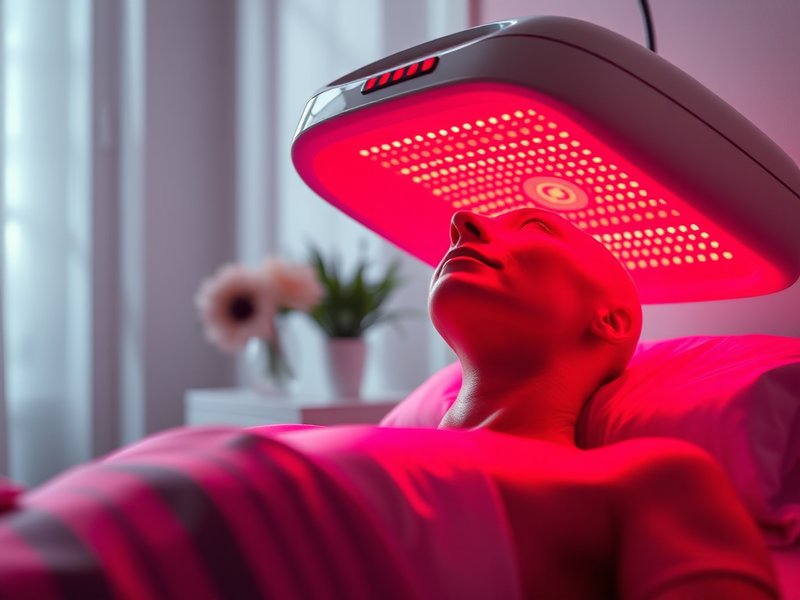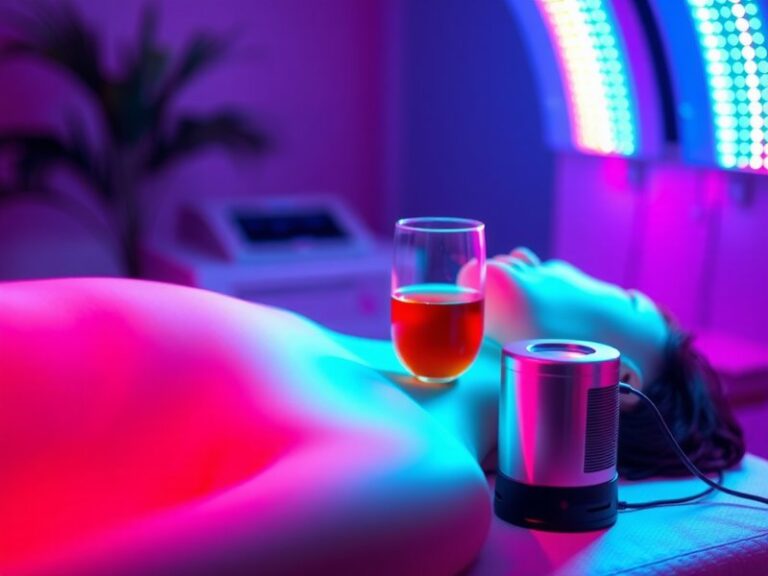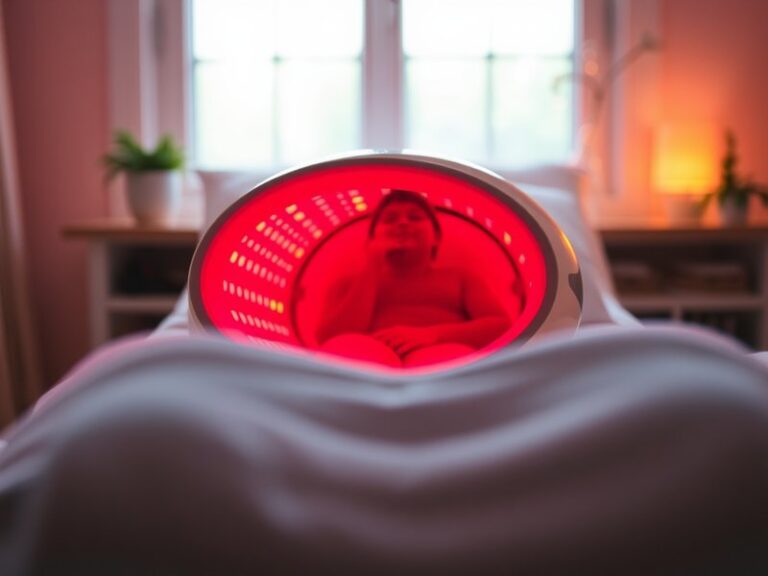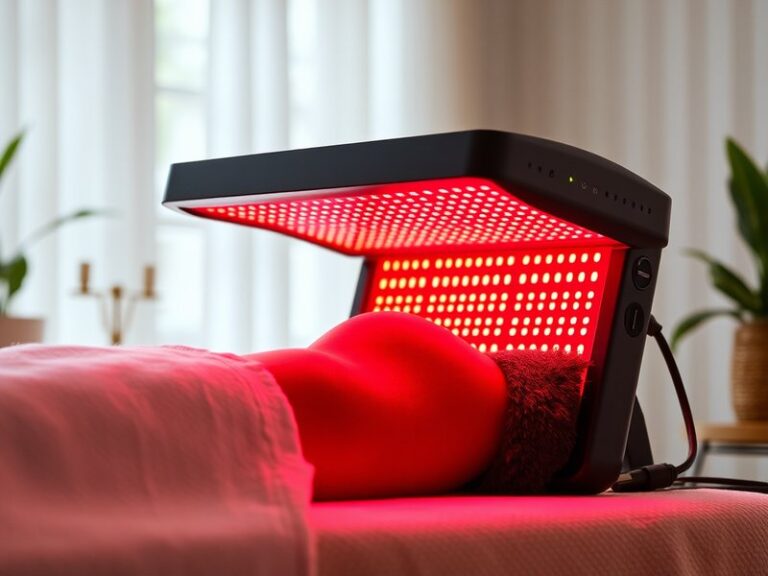Does Red Light Therapy Help Pain?
Does Red Light Therapy Help Pain?
Have you ever wondered if there’s a simple, non-invasive way to manage pain effectively?
In recent years, red light therapy has emerged as a potential solution for individuals seeking relief from chronic pain conditions. This article will explore what red light therapy is, its potential benefits for pain management, considerations to keep in mind, alternatives, and whether it is a recommended option for pain relief.
Key Takeaways
- Red light therapy uses low-level wavelengths of light to promote healing and reduce pain.
- Numerous studies suggest its effectiveness in providing relief from various pain conditions.
- It is a non-invasive treatment option with minimal side effects compared to traditional pain management techniques.
What is Red Light Therapy?
Red light therapy, also known as low-level laser therapy (LLLT) or photobiomodulation, involves the use of specific wavelengths of light, typically in the red and near-infrared spectrum. This therapy is believed to stimulate cellular activity, enhance healing processes, and reduce inflammation.
Originally developed for medical use in the 1960s, red light therapy has since gained popularity in various fields, including physical therapy, dermatology, and sports medicine. It works by penetrating the skin and stimulating mitochondria in cells, which leads to increased energy production and cell regeneration.
Mechanism of Action
The mechanism behind red light therapy is primarily related to how it interacts with the cells in our body. When the red and near-infrared light hits the skin, it is absorbed by chromophores in the body’s cells. This absorption triggers a series of biochemical events, which can help relieve pain and promote healing.
What are the Benefits of Red Light Therapy?
As a treatment option, red light therapy offers a range of benefits, particularly for those struggling with pain. The advantages of this therapy will be explored in detail below.
Pain Relief
Various studies indicate that red light therapy can effectively alleviate pain related to conditions such as arthritis, muscle strains, and joint pain. Researchers have found that the therapy can help decrease pain perception and improve overall mobility.
Reduced Inflammation
Another significant benefit of red light therapy is its anti-inflammatory properties. By promoting circulation and reducing oxidative stress, this therapy can minimize inflammation in affected areas, facilitating faster recovery from injuries and other pain-related conditions.
Read our take on Does Red Light Therapy Affect Botox?
Accelerated Healing
Red light therapy has been shown to enhance tissue repair and wound healing. Faster healing can help individuals return to daily activities sooner and avoid prolonged discomfort.
Non-Invasive Option
Unlike many traditional pain treatments, red light therapy is non-invasive and generally considered safe. Patients can receive treatment without the concerns of surgery, cortisone injections, or extensive medication regimens.
Is it Possible to Use Red Light Therapy for Pain Management?
Indeed, many individuals are turning to red light therapy as a viable option for managing pain. The increasing availability of home-use devices further supports its application for personal care.
What are the Advantages of Using Red Light Therapy?
One of the main advantages of integrating red light therapy into pain management is its accessibility. Many devices designed for home use allow individuals to treat specific areas of discomfort at their convenience.
What are the Disadvantages of Using Red Light Therapy?
While red light therapy has its advantages, it may not work for everyone. Results can vary based on individual conditions, and some people might experience limited relief from their symptoms. Additionally, overuse of therapy can lead to unintended effects, such as skin irritation.
What are the Things to Consider Before Using Red Light Therapy?
Before starting treatment, it is essential to consider certain factors that can influence the effectiveness of red light therapy.
Consult Health Professionals
It is critical to consult with a healthcare provider before beginning red light therapy, especially if you have underlying health conditions or are currently taking medications that may affect light sensitivity.
Device Quality
Choosing a high-quality red light therapy device is vital. Some lower-quality products may not deliver effective wavelengths or strengths necessary for pain relief.
Treatment Duration and Frequency
Establishing a proper treatment regimen is important. Excessive or insufficient use may impact the therapy’s effectiveness. Following recommended guidelines can ensure optimal results.
What are the Alternatives to Red Light Therapy?
If red light therapy isn’t the ideal option for everyone seeking pain relief, several alternatives can also be considered.
Physical Therapy
Physical therapy can help individuals with pain management through personalized exercises, stretches, and hands-on treatment. Therapists often create customized programs that address specific pain areas.
Medication
Over-the-counter pain relievers like NSAIDs or prescribed medications can manage pain effectively, though they may carry risks of side effects and dependency.
Acupuncture
Acupuncture, an ancient practice rooted in Traditional Chinese Medicine, involves inserting thin needles into specific points on the body to alleviate pain. Many patients report significant relief from chronic pain conditions through acupuncture.
Discover the analysis in Red Light Therapy Frequency for Wrinkles
Conclusion: Is it Recommended to Use Red Light Therapy for Pain?
Red light therapy presents a promising option for individuals suffering from various pain conditions, particularly for its ability to reduce pain and inflammation effectively. While it may not be suitable for every individual, many have found it to be a safe and effective addition to their pain management strategies. As with any treatment, consulting with healthcare professionals is essential to determine the best approach tailored to individual needs.
Frequently Asked Questions
How long does it take to see results from red light therapy?
While some individuals report immediate pain relief, others may require several sessions to observe significant improvement. Typically, results can be seen after consistent use over a few weeks.
Are there any side effects associated with red light therapy?
Generally, red light therapy is considered safe, with minimal side effects. Some users may experience mild skin irritation or temporary redness following treatment, but these effects usually subside quickly.
Can red light therapy be used in conjunction with other treatments?
Yes, many people use red light therapy alongside other forms of treatment, such as medication or physical therapy, to enhance overall pain relief. However, it is advisable to consult a healthcare provider before combining therapies.
Is red light therapy suitable for all types of pain?
Red light therapy has shown effectiveness for various pain types, but it may not be suitable for everyone. Chronic pain conditions should be discussed with a healthcare professional to determine if red light therapy is a viable option.






